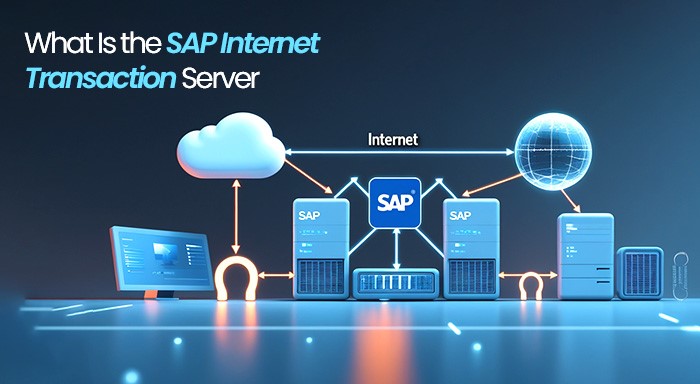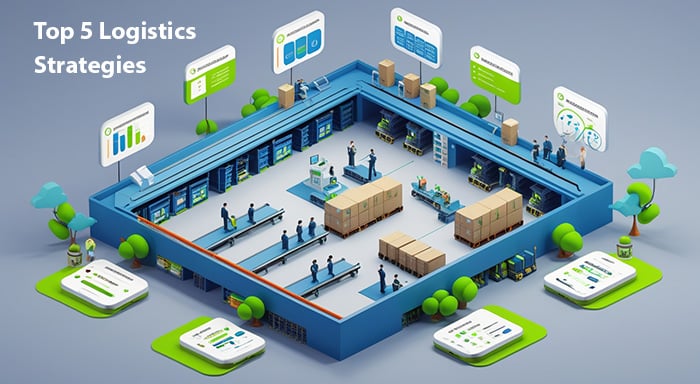Introduction
In the intensely connected enterprise environment of the modern world, smooth accessibility to business applications over the internet is not an optional strategy but a core necessity. Closing the gap between conventional enterprise platforms and web technology is important for enhancing user experience, system performance, and remote accessibility. One of the important solutions offered by SAP in this environment is the Internet Transaction Server.
It plays a pivotal role in revolutionizing static SAP transactions into browser-accessible and engaging interfaces. If you want to learn what an Internet Transaction Server is from the scratch, then you are in the right place. In this blog, you will understand the meaning of the term, how it operates, and its main importance.
What is Internet Transaction Server?
The Internet Transaction Server (ITS), an important part of SAP's BC-FES-ITS module, serves as a functional interface between the web and SAP systems (like R/3 or AS ABAP). It allows reports, business transactions, and functional modules to be implemented via a web browser without needing a conventional SAP GUI.
Main Components:
- WGate (Web Gateway): It helps in managing communication between the ITS and web server.
- AGate (Application Gateway): Handles the connectivity between SAP systems and ITS.
ITS converts SAP GUI screens into HTML dynamically, improving their accessibility via browsers—aiding users with a web-driven and innovative front end.
Mechanics of Internet Transaction Server
When a user starts a session in their browser, the following sequence of events happens:
- First, the request is transmitted to the web server.
- The web server then forwards the request to ITS.
- Then, ITS forms a connection with the SAP backend, processes the request, and returns information in HTML format.
This process enables users to:
- Execute business transactions.
- Run SAP reports.
- Call function modules.
- Implement business transactions
- Interaction with ABAP applications.
Supported Web Technologies:
- Web Transactions.
- SAP GUI for HTML
- Web Reporting
- WebRFC (Remote Function Calls)
- ITS Flow Logic
Benefits of Internet Transaction Server
1. Streamlined Web Enablement
Organizations can enable SAP applications on the web without actually rebuilding them. ITS takes present ABAP screens and transforms them into HTML automatically.
2. Reduced Development Overhead
- Developers can utilize familiar platforms such as Web Application Builder or ABAP Workbench.
- There is no need to learn brand new languages or platforms from scratch.
3. Simple Deployment
- The installation of ITS happens on top of an AS ABAP platform.
4. Improved User Experience
- Web applications developed via ITS ensure a comprehensive look and feel.
- ITS helps in decoupling front-end design from backend logic, enhancing flexibility and usability.
ITS in the Domain of SAP Web Applications
The Internet Transaction Server of SAP is foundationally significant to numerous EWTs (Easy Web Transactions) and IACs (Internet Application Components). These are leveraged in:
- SAP Online Stores.
- Employee Self-Service (ESS)
- SAP BW Web Reporting.
- Enterprise Buyer Professional (EBP)
- Advanced Planning and Optimization (APO)
These applications enable users to:
- Extract reports.
- Launch transactions.
- Gain accessibility to dashboards.
- Engage with the SAP ecosystem via any browser.
Modern SAP Architectures and ITS Evolution
ITS was revealed originally in the earlier version of SAP R/3 releases. However, from SAP Release 6.10 onwards, the ICM, i.e., Internet Communication Manager (ICM), has emerged to replace the functionalities of ITS. However, Internet Transaction Server remains pertinent for conventional SAP landscapes and legacy environments.
ITS Application Areas Across Diverse Industries
- Retail: Online order monitoring incorporated with SAP backend.
- Manufacturing: Status updates related to supply chain via browser interface.
- Healthcare: Patient portal information extracted from SAP via ITS interfaces.
- Finance: Real-time report accessibility from SAP FI/CO modules.
For worldwide enterprises, the versatility to access SAP data through web browsers ascertains productivity and agility—whether the team is in Toronto, New York, Sydney, or London.
Key Takeaways
- The Internet Transaction Server reduces the gap between SAP core platforms and web technologies.
- It fosters browser-driven accessibility to SAP functionalities, enhancing usability.
- ITS is an integral part of the strategic efforts of SAP to optimize user interfaces while retaining backend capabilities.
Conclusion
The Internet Transaction Server is a vital component of the technology stack of SAP, vital for businesses switching to browser-driven interfaces without losing core functionality of ERP. Irrespective of whether you are targeting global deployment or advancing legacy platforms, ITS provides a robust and cost-effective solution to extend accessibility to SAP applications efficiently and securely.
For enterprises existing in digitally mature markets such as Australia, Europe, and North America, ITS emerges as a cornerstone towards full SAP modernization and web enablement.



